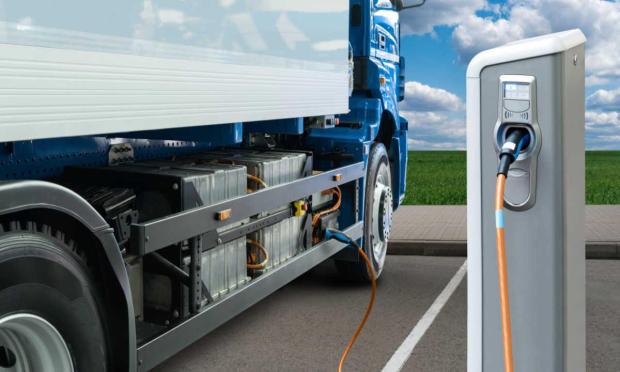Freight Companies Go Green — and Forgo Costly EV Leases — With ‘Trucks-as-a-Service’

As shippers aim to meet sustainability mandates and carriers look to switch to electric vehicles (EVs), both parties are finding that the project is complicated and expensive.
For a trucking industry that is largely made up of owner-operators and carriers with fleets of just one to five trucks, the transition to EVs has big hurdles. For one thing, electric trucks cost almost four times as much as diesel trucks.
Beyond that, there are many unknowns when it comes to switching to these new vehicles, such as the vehicle’s range, maintenance and charging locations.
“There’s plenty of reason why these owner-operators and transporters aren’t rushing to the dealers to buy the trucks,” WattEV CEO and Founder Salim Youssefzadeh told PYMNTS.
Developing Truck-as-a-Service
To help them overcome these hurdles, WattEV is developing a solution meant to eliminate the upfront cost and answer the unknowns: Trucks-as-a-Service (TaaS). This will offer individual drivers and small fleets access to WattEV’s heavy-duty battery-electric trucks, charging and maintenance. They may use these assets for their own routes or routes provided by WattEV.
“It’s all-inclusive, and there’s really no unknowns at that point,” Youssefzadeh said.
Shippers with sustainability mandates will be able to use the WattEV platform to match their routes to these electric trucks. WattEV will take the contract for the routes they have, put them on its platform and guarantee delivery in a timely manner using electric trucks.
For both parties, TaaS will eliminate upfront costs and complexities. For drivers, it will also solve another problem: the time spent charging an EV. With TaaS, drivers will be able to stop at any WattEV charging depot, drop off a WattEV truck, pick up a fully charged one and continue their route. This “Pony Express” model will save drivers the two to three hours it takes to charge electric heavy-duty trucks.
The TaaS package will also include a mobile app to help drivers plan the day ahead, optimize their route, manage the battery charge and handle freight brokerage and data collection.
“The app becomes a key functionality to really complete the entire ecosystem,” Youssefzadeh said. “A driver can book a truck through the app, manage their route, see where the truck needs to be charged or where a fully charged truck can be picked up.”
Starting with the Middle Mile
WattEV currently has facilities under construction in three California cites — Bakersfield, San Bernardino and Gardena — and plans to have these sites in operation and 50 electric trucks on the road by the first quarter of 2023.
On July 14, the company announced that it had secured funding totaling some $3 million from two Southern California government agencies committed to cleaning air and supporting zero-emission transportation: the Southern California Association of Governments and the South Coast Air Quality Management District (South Coast AQMD). This is meant to accelerate its development of TaaS.
At first, TaaS is aimed at shippers and carriers operating in the Southern California region. Later, it aims to expand to major U.S. traffic corridors.
“The middle mile is the sweet spot right now because we can make the miles work,” Youssefzadeh said. “As we start expanding our network beyond the three sites that are currently in development, going up toward Northern California, we can go beyond the middle mile and start going toward long-haul freight as well.”
